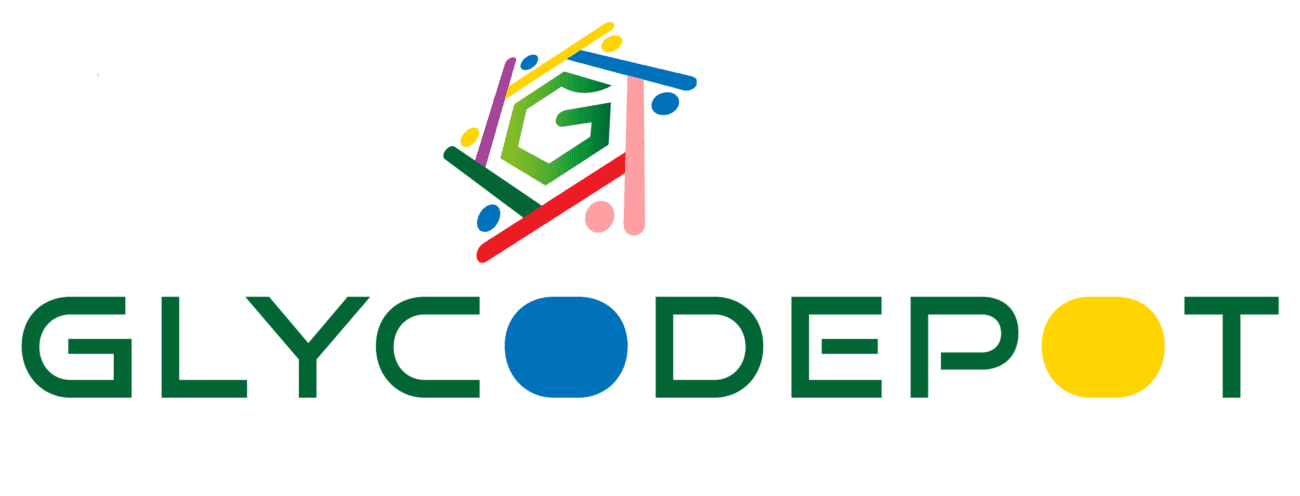UDP-GlcNAc (Uridine Diphosphate N-Acetylglucosamine) is a nucleotide sugar that plays a vital role in various glycosylation processes. It serves as a donor of N-acetylglucosamine (GlcNAc) in the biosynthesis of glycans, glycoproteins, and glycosaminoglycans (GAGs).
Structure & Properties:
- Molecular Weight (MW): 607.3 g/mol
- Chemical Formula: C17H27N3O17P2
- Synonyms: UDP-N-acetylglucosamine, UDP-GlcNAc
- Functional Groups: N-acetylglucosamine (GlcNAc) is a derivative of glucose with an acetyl group replacing the hydroxyl group at the amine position, making it an essential component of glycans.
Biological Role:
- Biosynthesis Pathway: UDP-GlcNAc is synthesized in the cytoplasm and acts as a glycosyl donor for the addition of GlcNAc to growing glycans. It is involved in the production of complex carbohydrates, glycoproteins, and GAGs.
- Function: As a key intermediate in the hexosamine biosynthetic pathway, GlcNAc transfers GlcNAc to various acceptor molecules, aiding in glycosylation processes that are critical for cell signaling, adhesion, and immune responses.
Applications:
- Glycoprotein Synthesis: UDP-GlcNAc is involved in the N- and O-linked glycosylation of proteins, contributing to the structural and functional diversity of glycoproteins.
- Glycosaminoglycan (GAG) Biosynthesis: It is also crucial for the biosynthesis of GAGs such as hyaluronic acid, chondroitin sulfate, and heparan sulfate, which are important components of the extracellular matrix.
Significance in Research:
- Cell Signaling and Regulation: UDP-GlcNAc is implicated in nutrient sensing and cellular signaling through the O-GlcNAc modification of proteins. This dynamic and reversible post-translational modification influences many cellular processes, including gene expression and protein degradation.
- Disease Mechanisms: Aberrant glycosylation involving UDP-GlcNAc is associated with various diseases, including cancer, diabetes, and neurodegenerative disorders. Research on this molecule contributes to understanding the role of glycosylation in disease progression.
Key Roles:
- Extracellular Matrix Formation: UDP-GlcNAc is a building block for GAGs, which are essential for maintaining tissue structure and function.
- Post-Translational Modifications: It plays a key role in O-GlcNAcylation, a reversible modification of serine and threonine residues on proteins, influencing protein stability, localization, and activity.
Storage and Stability:
- Storage: UDP-GlcNAc should be stored at -20°C in a dry, moisture-free environment to maintain stability.
- Stability: The compound is stable under proper storage conditions but can degrade when exposed to heat, moisture, or light.
Research Applications:
- Glycobiology Research: UDP-GlcNAc is widely used to study glycosylation processes, protein modifications, and the role of glycan structures in cellular communication and disease.
- Metabolic Labeling: In studies of glycosylation, UDP can be used as a precursor for metabolic labeling, allowing researchers to track the incorporation of GlcNAc into glycan structures.
Potential Impact:
- Therapeutic Development: Targeting the pathways involving GlcNAc may lead to new treatments for diseases characterized by abnormal glycosylation, such as congenital disorders of glycosylation, cancer, and diabetes.
- Synthetic Biology: UDP-GlcNAc is used to engineer cells with altered glycosylation profiles, which can be applied to therapeutic protein production and tissue engineering.
Key Research Areas:
- O-GlcNAcylation in Cell Signaling: The study of UDP-GlcNAc’s role in protein O-GlcNAcylation is a growing area of research, particularly about its effects on cellular signaling, metabolism, and disease states.
- Glycosylation Disorders: Investigating the biosynthesis and function of UDP in glycosylation pathways may reveal new insights into diseases caused by defects in glycosylation.
Conclusion:
UDP-GlcNAc is a critical nucleotide sugar involved in glycosylation processes essential for the synthesis of glycoproteins and GAGs. Its role in O-GlcNAcylation and its involvement in cellular communication and disease make it a vital molecule for research in glycobiology, cell signaling, and therapeutic development.

Reviews
There are no reviews yet.